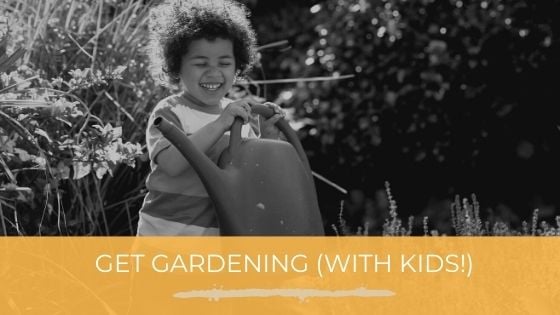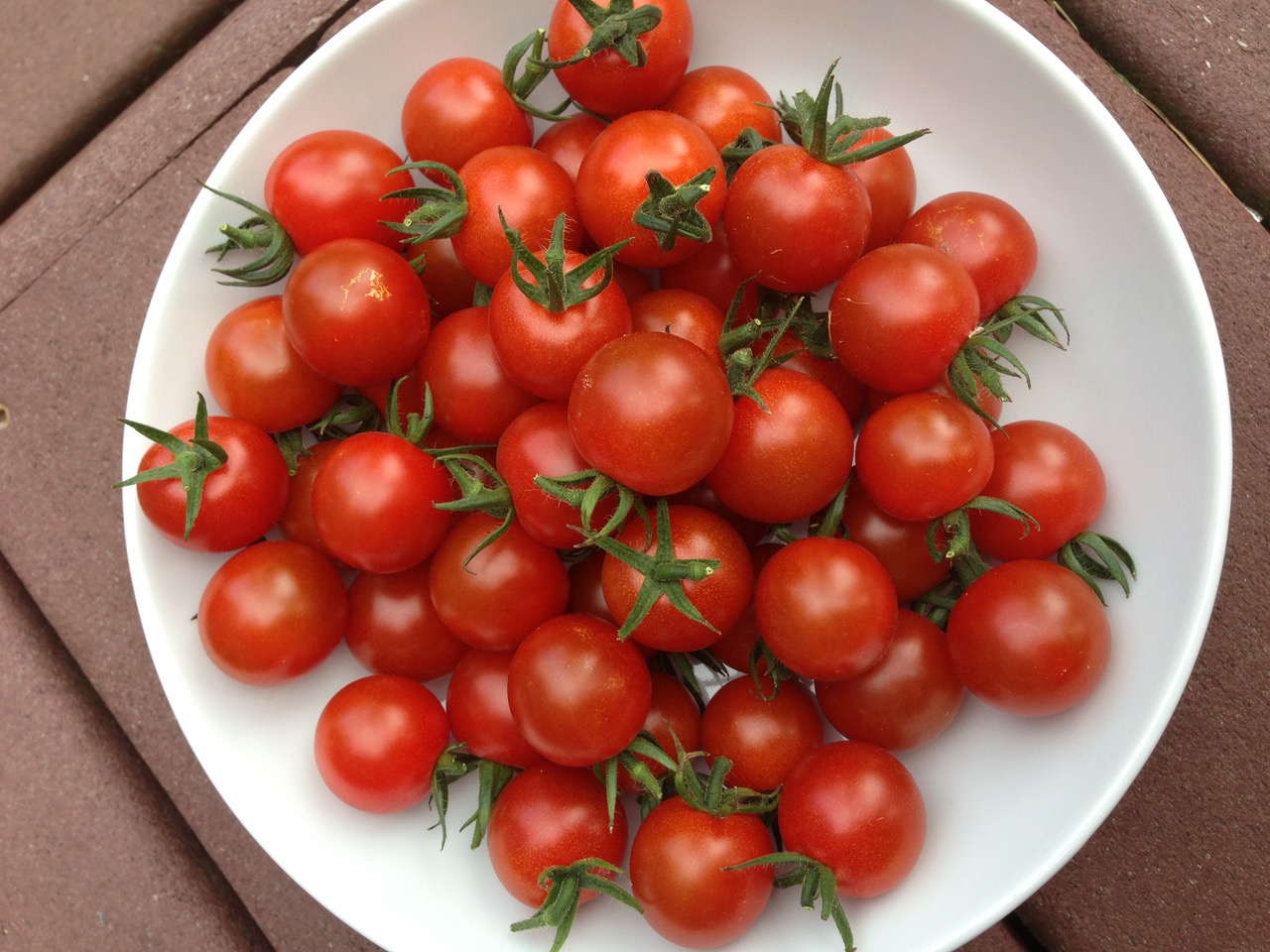There’s something magical about spring, especially in Minnesota when bitterly cold winters keep us cooped up for long stretches. If you’re looking for something the whole family can enjoy doing outdoors this year, here are four container gardening projects we promise your kids will love.
They’ll be delighted to find they can grow not just plants, but also food. Encourage children of all ages to check on their plants daily to observe their growth, pour a bit of water on and, eventually, enjoy a satisfying harvest all their own. If you have picky eaters, you’ll find they’re more likely to eat their veggies right off the plants than from their dinner plates.
How did we choose these four projects? Bright colors, big flowers, interesting textures and dramatic green growth are key for kids. And for you? None of these projects require green-thumb experience. Just follow each project recipe and get ready, get set … grow!
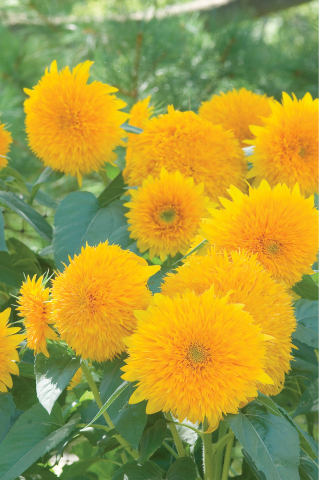
Dwarf sunflowers
Late spring is the perfect time to plant sunflower seeds. While many varieties reach heights of 6 feet, dwarf varieties usually grow only 1 to 3 feet tall, so they can easily be grown in pots. Dwarf sunflower seed varieties can be purchased at local garden centers and online through mail-order seed companies. Burpee.com, for example, offers several tried-and-true dwarf varieties such as Teddy Bear (pictured, right), which has fluffy-looking bright yellow flowers, and Little Becka, a stunner with big, red flowers edged in yellow. Other shorter varieties include Elf and Bashful, but any variety under 3 feet will do.
Sources: Renee’s Garden, reneesgarden.com; Territorial Seed Co.: territorialseed.com; W. Atlee Burpee & Co., burpee.com
Containers: It’s better for a container to be slightly larger than necessary, rather than so small it cramps growing roots or dries out too quickly.When growing dwarf sunflowers,chose a container at least 16 inches wide and 16 inches deep.
Soil: Always use potting soil rather than topsoil or soil from garden beds when growing plants in containers to allow for better drainage.
When and how to plant: You’ll find everything you need to know on the back of your seed packets, including how deeply seeds should be planted in the soil, how long it will take for them germinate and when to expect flowers to bloom.
Growing tips: Sunflowers need full sun (at least 6 hours of direct sunlight per day), so be sure to choose a sunny, bright spot for your containers. Water regularly. It’s fine for the soil to be a little moist between waterings, but it shouldn’t be soggy. Once it gets hot, expect to water containers daily if it doesn’t rain.

Potatoes
The funnest thing about growing potatoes is harvesting them — and harvesting is easy when you grow potatoes in a bag. Gardener’s Supply Co. fabric bags work well. Easy-to-follow instructions on how to use them can be found on their website (gardeners.com). Potato grow bags are a great choice because, come harvest time, all you have to do is dump out the bag — and the kids can race around hunting for potato treasures in the upturned soil.
Sources: Purchase “seed potatoes” or “slips” at garden centers or online. Mother Earth Gardens in Minneapolis sells slips, motherearthgarden.com; or see Irish Eyes Garden Seeds, irisheyesgardenseeds.com.
Containers: Gardener’s Supply Co. and other online vendors sell bags in a variety of sizes and colors, including red, blue, purple, green and black.
Soil: Bagged potting soil is okay, but potatoes do better in a mix of 1/3 topsoil and 2/3 compost (sold in bags at independent garden centers). If you go with a standard potting soil, be sure to add fertilizer at planting time.
When and how to plant: Potatoes should be planted after the danger of frost has passed, which is late May, usually, in Minnesota.
Growing tips: Plant potatoes in full sun (at least six hours of direct sunlight per day). After about 10 weeks, you can harvest smaller or “new” potatoes. If you wait a bit longer for the vines to die back, usually by late August, your spuds will have grown even bigger.
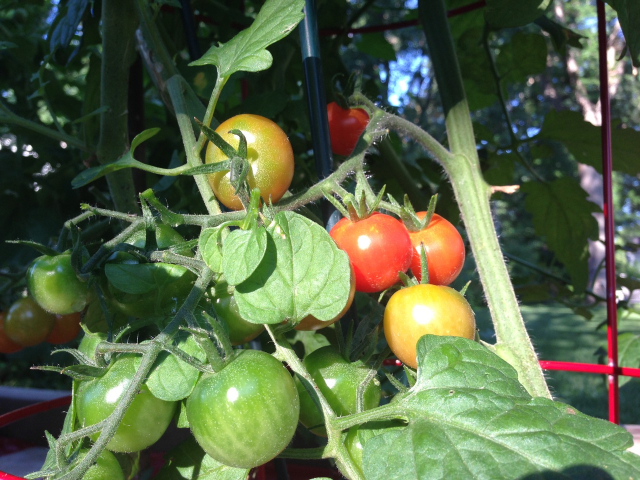
Cherry tomatoes
Colorful, tasty and easy to pop in your mouth, cherry tomatoes are a healthy snack that kids can enjoy straight from the garden.
Sun Gold is popular variety, but Sweet Million (pictured, above) and Supersweet 100 are also local favorites.
Sources: You can start tomatoes from seeds indoors in winter, but we recommend you go with plants sold in various sizes
at local farmers markets and garden centers in spring if you’re a beginning gardener.
Containers: Tomatoes can grow 5 tall and wide (or more!) so give them plenty of room to spread out. Containers should be at least 16 inches wide and 24 inches deep. Many gardeners use 5-gallon buckets for tomato growing, and they work well as long as you drill holes in the bottom for drainage. Support your tomatoes with cages or teepees made from bamboo stakes or poles.
Soil: Always use potting soil rather than topsoil or soil from garden beds when growing plants in containers to allow for better drainage.
When and how to plant: Wait until nighttime temperatures are consistently above 55 degrees (this can be as late as June) to plant tomatoes. Planting early only stunts plants because they don’t do well in the cold. At planting time, pluck the leaves off the lower part of the plant and bury all but the top third of the plant during planting. Doing this helps tomato plants produce lots of strong, new roots all along the plucked stem.
Growing tips: Place tomato containers in full sun (at least 6 hours of direct sunlight per day). Pots will be heavy, so put them where you want them to stay before adding the soil. Keep plants well-watered. Tomatoes produce poorly in dry soil. It’s OK to prune indeterminate tomato plant varieties (such as those mentioned above) throughout the summer to keep them under control. Don’t prune determinate plants (those that usually stop growing at about 5 feet tall). The label should tell you which type you’re buying.
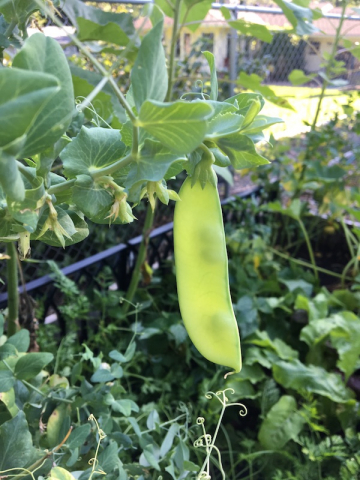
Sugar snap peas
Bush peas are fun and easy to grow from seeds, which are easy for even the littlest of fingers to handle and plant. Unlike pole types, which can reach 6 feet tall or more, bush varieties are usually 1 to 3 feet tall, so pods are right at toddler height. Support snap peas by placing a small trellis, teepee or tomato cage inside the pot.
Sources: Buy seeds at garden centers or online. Be sure to shop for bush or dwarf types that will stay compact enough for containers such as Sugar Daddy or Sugar Lace II. See Renee’s Garden, reneesgarden.com; Park Seed, parkseed.com.
Containers: Like tomatoes, sugar snap peas grow well in 5-gallon buckets with holes drilled in the bottom, or you can choose any container that’s at least 14 inches or more deep and at least 10 inches wide.
Soil: Peas don’t have a lot of specific soil requirements and don’t need much fertilizer, so it’s fine to go with any bagged potting mix. Fertilize at planting time only. If you fertilize more often, you’ll get lots of leaves and few pea pods.
When and how to plant: Peas should be planted in early to mid-spring when the soil is cool and moist, usually April or May, depending on the spring temperatures in Minnesota. Seeds can have a tough time germinating in really cold, wet soil, so if you don’t see seedlings coming up within two weeks, plant a few more seeds.
Growing tips: Plant snap peas in full sun (at least six hours of direct sunlight per day). Water regularly. Soil should not be allowed to dry out, especially when plants are flowering. Harvest peas regularly to keep plants producing. The more you pick, the more you’ll get!



